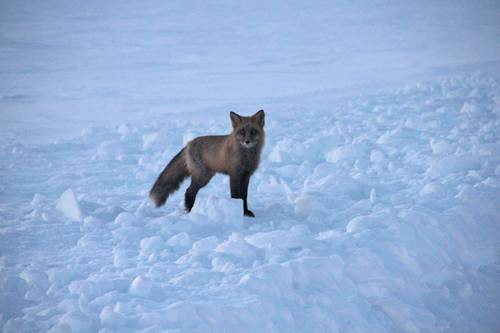In the isolated lands of Siberia you can not only appreciate the terrible reality of climate change, but also there has been a possible solution that goes back to the history of the planet before human civilization. It is a project that promises, one day, to bring back the mammoths as part of an effort to combat the most challenging of modern challenges.
On the outskirts of the remote town of Chersky, scientists Sergei and Nikita Zimov, father and son, have perfected their plan to combat climate change: the Pleistocene Park. Over the past 33 years, they and their patrons have slowly transformed the landscape in an attempt to restore the local ecology that existed in Pleistocene times. As a result, they have managed to condition an area of 160 square kilometers, where they hope to imitate the environment that existed many years ago, according to The Independent.
Some 25 meters below the ground, scientists have built a maze of tunnels and stairs. Going down, Nikita explained that permafrost – the frozen layer of soil in tundra regions – can be hundreds of meters thick and covers a quarter of the Northern Hemisphere. Despite its name, which suggests permanence, the reality is that it melts, damaging everything at its peak.
The remains of hundreds of animals and plants are buried there, which could be transformed into large amounts of potentially harmful emissions. The decomposition of organic matter releases greenhouse gases and the radius in which they are emitted only increases the world temperature further.
The Zimovs have transported bison, horses, reindeer, goats, and other herbivores from all over the world, all animals that once inhabited northern areas. His idea comes from a theory emerged after decades of research that suggests that flora and fauna in the Pleistocene epoch housed an ecosystem better suited to preserving the temperature of the permafrost than that of the forests found there today.
Insulating layer
With the disappearance of the animals in that area, the snow remained intact, creating, paradoxically, an insulating layer that protected the land from the harsh winter temperatures, while now that the area is not compacted, the permafrost could be melting at a higher range. fast.
Scientists have been working on testing this theory for some years. His park has around 150 animals, all chosen on purpose. The results obtained so far have caused his enthusiasm: the earth is holding more carbon in the places where animals live. Even grasslands are proving to be beneficial to the environment, pale grasses reflect sunlight, and their roots increase the storage of emissions. Mainly, they have found that the permafrost temperature in that area is 2.2 degrees Celsius cooler than average.
However, introducing goats and horses is not the Zimovs’ final plan. To return to its Pleistocene state, with all the advantages in emotions that this entails, his dream is to bring back the most representative animal of that environment: the woolly mammoth. These beasts “were the real permafrost engineers,” the scientists explained. Their anatomy and weight make them ideal for breaking ice, as well as removing bushes and trees.
In order to accomplish their goal, the scientists contacted the American geneticist George Church, a professor at Harvard University Medical School, who is already working on a way to recreate the woolly mammoth. His work has managed to raise around 15 million dollars, from investors around the world. However, in the best-case scenario, it would take up to 16 years to be able to reproduce a mammoth: four years to define the method, two years to polish the details, and 10 for the animal to grow to reproductive age.
The main technique used is called “multiplex editing”, in which hundreds of DNA modifications are made simultaneously, in order to change the architecture of the building blocks of life. Unlike fertilization in-vitro, In the case of mammoths, the fertilized eggs would be developed in artificial bellies, with the purpose of incubating the elephant embryos, which would help protect the already endangered population of Asian elephants from which development would start.
The challenges that researchers face are colossal. To make a significant difference to the environment, Nikita believes that 3 million square kilometers covered would be needed, largely by extending the current operation into Russian territory. According to the scientist, that park area would help retain one billion tons of carbon per year, the equivalent of 10 percent of current emissions.
–


